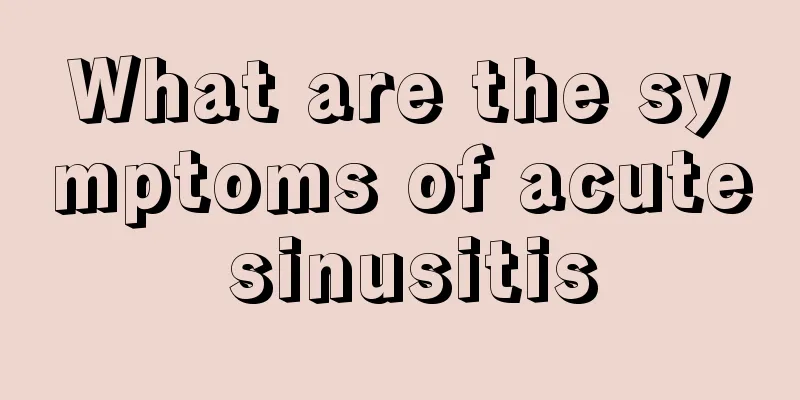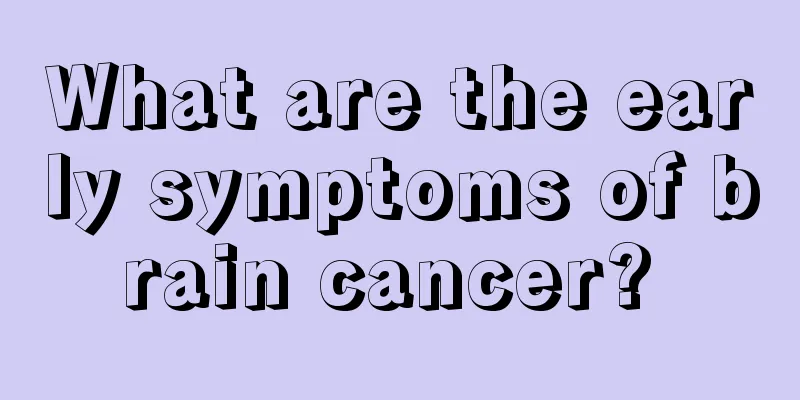What diseases can esophageal cancer be easily confused with?

|
In recent years, esophageal cancer has become one of the major diseases that endanger people's health. Its causes are diverse. This disease should be differentiated from the following diseases: The following diseases should be differentiated from esophageal cancer. When cancer cannot be ruled out and various examinations cannot confirm it, follow-up should be performed, at least once a month. 1. Patients with esophageal varices often have other signs of portal hypertension. X-ray examination shows thickening, tortuosity, or beaded filling defects in the lower esophageal mucosal folds. Severe varicose veins can be seen under fluoroscopy with weakened esophageal motility and slow passage of barium. However, the wall of the tube is still soft and elastic, and there is no local stenosis or obstruction. Esophagoscopy can be further identified. 2. Cardiac spasm is also called achalasia. Due to degenerative changes in the vagus nerve and the esophageal wall plexus, or excessive sensitivity to gastrin, the esophageal motility is weakened and the lower esophageal sphincter is relaxed, so that food cannot pass through the cardia normally. The course of the disease is generally long. Patients are more common in young women. The symptoms are sometimes mild and sometimes severe. Difficulty in swallowing is often intermittent, often accompanied by pain behind the sternum and reflux. Antispasmodics can often relieve symptoms, and the reflux often does not contain bloody mucus. Generally, there is no progressive weight loss (but in the late stage of achalasia and when the obstruction is severe, the patient may lose weight). X-ray examination shows that the lower end of the esophagus is smooth, beak-shaped or funnel-shaped, with smooth edges. After inhalation of amyl nitrite, the cardia gradually expands, allowing barium to pass smoothly. Endoscopic biopsy shows no evidence of cancer for identification. 3. Esophageal tuberculosis is relatively rare and is generally secondary. If it is a proliferative lesion or a tuberculoma is formed, it can cause varying degrees of obstruction, dysphagia or pain. The course of the disease progresses slowly, with more young and middle-aged patients, and the average age of onset is younger than esophageal cancer. There is often a history of tuberculosis, a positive OT test, and symptoms of tuberculosis poisoning. Endoscopic biopsy is helpful for identification. There are three manifestations of esophageal angiography: ① Filling defects and ulcers in the esophageal cavity, the lumen of the lesion segment is slightly narrow, the wall is slightly stiff, the niche is large and obvious, the edge of the niche is irregular, and the surrounding filling defects are not obvious. ② Filling defects on one side of the esophageal wall are caused by the mass formed by the tuberculosis of the mediastinal lymph nodes around the esophagus compressing the esophageal cavity and invading the esophageal wall. ③ Esophageal fistula formation. It manifests as a small protruding barium shadow of the esophageal wall, like a small niche, with no filling defects around it. The diagnosis of mediastinal lymph node tuberculosis complicated by lymph node esophageal fistula can be confirmed by esophageal cytology or esophagoscopy. 4. Esophagitis Hiatal hernia complicated with reflux esophagitis may cause stabbing or burning pain similar to early esophageal cancer. X-ray examination shows coarse mucosal texture, mild stenosis of the lower esophageal lumen, barium retention, and mucosal niches in some cases. For cases that are difficult to confirm, esophageal cytology or esophagoscopy should be performed. Iron deficiency pseudoesophagitis is more common in women. In addition to dysphagia, there are also symptoms such as microcytic hypochromic anemia, glossitis, gastric acid deficiency and antionychia. After iron supplementation, the symptoms improve quickly. 5. Esophageal diverticula can occur in any part of the esophagus. The most common is traction diverticula. There are usually no symptoms in the early stage, but later on, different degrees of dysphagia and reflux may occur. When drinking water, a "coughing" sound may be heard, and there may be chest tightness or burning pain behind the sternum, heartburn, or a foreign body sensation after eating. Because food is stored in the diverticula for a long time, there may be obvious bad breath. Sometimes, due to changes in body position or sleep at night, aspiration of diverticula fluid and choking cough may occur. X-ray multi-axis fluoroscopy or air-barium double contrast examination can show the diverticula. 6. Benign esophageal strictures are often accompanied by a history of acid swallowing and alkali chemical burns. X-rays show esophageal strictures, disappearance of mucosal wrinkles, stiff tube walls, and a gradual transition between the stricture and the normal esophageal segment. Clinically, we should be alert to the possibility of canceration based on long-term inflammation. 7. Benign esophageal tumors generally have a long course, slow progression, and mild symptoms. Most of them are esophageal leiomyoma. In typical cases, dysphagia is mild and progresses slowly. X-ray and esophagoscopy examinations show raised tumors with smooth surface mucosa, round or "ginger"-like wall filling defects, and flattened surface mucosa with "smear sign", but no ulcers. The local lumen expansion is normal, and endoscopy can show round tumors protruding under the normal mucosa. "Sliding" phenomenon can be seen under the mucosa during esophageal peristalsis. Sometimes it is difficult to distinguish it from esophageal cancer with slight changes in the surface mucosa that grows on one side wall and mainly extends to the submucosa, but the latter cannot be seen "sliding" under the endoscope. 8. There are two general forms of esophageal leiomyosarcoma , one is polypoid and the other is infiltrative. In the polypoid type, nodular or polypoid masses can be seen in the esophageal cavity, with clear perimeter, protrusion and eversion. There is an ulcer in the center, the ulcer surface is uneven, and the mass also protrudes out of the cavity. In X-ray manifestations, the polypoid type has obvious expansion of the esophageal cavity. When there is a huge mass in the cavity, there are multiple polypoid filling defects of varying sizes, niches in the mucosal destruction, poor barium flow, and compression and displacement of the lumen. Soft tissue mass shadows are often seen outside the lumen, which looks like a mediastinal tumor, but during esophageal contrast, the mass can be seen to be connected to the esophageal wall and the diagnosis is confirmed. The X-ray manifestations of the infiltrative type are similar to those of esophageal cancer. 9. Changes in esophageal external pressure refer to compression and swallowing difficulties caused by abnormalities of organs adjacent to the esophagus. Certain diseases such as lung cancer mediastinal lymph node metastasis, mediastinal tumors, mediastinal lymph node inflammation, etc. can compress the esophagus and cause partial or severe stenosis of the lumen, resulting in severe dysphagia symptoms, which can sometimes be misdiagnosed as esophageal cancer. Esophageal barium meal radiography can often rule out diseases of the esophagus itself. 10. Globus hystericus This disease is a functional disease, which is related to mental factors and is more common in young women. Patients often have a foreign body sensation in the pharynx, which disappears when eating and is often induced by mental factors. In fact, there is no organic esophageal lesion in this disease, and endoscopic examination can be used to distinguish it from esophageal cancer. 11. Iron deficiency pseudomembranous esophagitis mostly occurs in women. In addition to dysphagia, other symptoms include microcytic hypochromic anemia, glossitis, gastric acid deficiency, and koilonychia. 12. Lesions of organs around the esophagus such as mediastinal tumors, aortic aneurysms, goiter, heart enlargement, etc. Except for mediastinal tumors invading the esophagus, X-ray barium meal examination can show smooth pressure marks in the esophagus and normal mucosal patterns. The above is what I have introduced to you about "Which diseases are easily confused with esophageal cancer?" I hope you will pay attention to it. Once you find any abnormal symptoms, you should go to the hospital in time to avoid delaying the disease. If you have other questions, please consult an online doctor for answers. Feihua Health Network is always by your side and cares about your health! Esophageal cancer http://www..com.cn/zhongliu/sda/ |
<<: Experts tell you: How long can you live with advanced pancreatic cancer
>>: What should you pay attention to before treatment of esophageal cancer?
Recommend
Can I get pregnant again within two years after having a caesarean section?
After giving birth by caesarean section, you must...
What should I check if I am getting thinner?
The state of the body changes all the time, becau...
What is aspartate aminotransferase
Aspartate aminotransferase is an important substa...
How to recover from knee pain after running
If you rarely exercise and suddenly increase the ...
What causes purple lips?
The problem of purple lips cannot be ignored. Som...
How to remove nitrite from bird's nest
Authentic bird's nest has many benefits. It n...
What are the benefits of washing your hair with ginger juice?
Many people must have seen ginger shampoo when bu...
How to store red wine properly
People who love red wine know that the preservati...
What lunch box should I use when bringing lunch to work
In modern society, more and more office workers p...
The dangers of adults kissing babies
When a baby is born, he is pink and cute, making ...
What diseases can cervical spondylosis cause? We must pay attention to it
Because cervical spondylosis has become more and ...
What are the differences between Bauhinia trees and Bauhinia flowers
Bauhinia trees and Bauhinia flowers are companion...
Does drinking coffee give you bad breath?
Coffee is a very common drink in our lives. Wheth...
Why is there residue on lipstick
The color of a person's lips can reflect his ...
The dangers of malnutrition should be noted
Although the living standards are getting better ...









